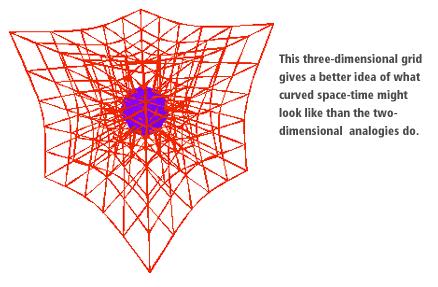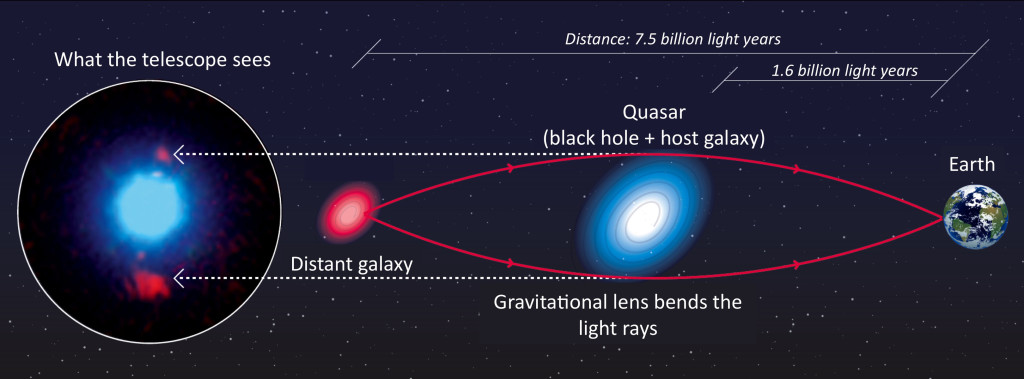-

-

-

-

-

-

-

-

-

-

-
-

-

-

-

-

-

-

-

-

-

-

-

-

-

-

-

-

-

-

-

-

-

-

-

-

-

-

-

-

-

-
-

-

-
 TOTW: Google's Project Ara Modular Phone May Be The Future Of SmartphonesOctober 30, 2014
TOTW: Google's Project Ara Modular Phone May Be The Future Of SmartphonesOctober 30, 2014 -

-

-

-

-

-

-

-

-

-

-

-

-

-

-
-
-

-

-

-

-

-

-

-

-

How Einstein Predicted The Future: A Story Of Gravitational Lensing
It’s 1916. A relatively unknown (see what I did there) physicist named Albert Einstein has just released a couple of papers about his very weird but interesting Theory of Relativity, and you can’t decide what you want to think about it. The papers have gained Einstein some popularity in the physics community, many agreeing with what he had to say, some disagreeing. Many years later, once the theory was proven through observations of Mercury’s orbit and other various tests throughout the years, Einstein became an internationally renowned, scientific rock star. Now it’s 2015, 100 years after Einstein introduced his ingenious theory. Einstein is still known as the epitome of human intelligence, and his fame and prestige is as widespread as ever, while the repercussions of his work still permeate the modern scientific landscape – so much so that it allows us to predict the future.
Before we get into the whole time travel stuff, it might help to understand more about what exactly General Relativity is. Despite the fact that Einstein is known as a genius worldwide, the specifics of what his theory actually means are lost on most people who haven’t extensively studied it. Whereas we see time and space as distinct, Einstein thought of them as one thing: “spacetime”. (Try not to think too hard about that merging space and time part.) Where Newton thought that there was this mysterious force called gravity that radiated from anything with mass, Einstein had his own theory, which assumed that, rather than using an enigmatic force to pull nearby things to it, objects with mass (especially large ones) curve spacetime. So, when following the easiest path through spacetime, which all objects naturally do, objects near another large object, say the Earth, naturally get pulled toward it. Now there’s a proposition for you: just by existing, you disrupt the fabric of the universe by curving it.
But it’s true, and as I wrote earlier, general relativity has been confirmed through many different experimental observations over the years. One such confirmation came through the discovery of a phenomenon that Einstein predicted in his papers, but never expected to be observed because of its rarity: gravitational lensing. Gravitational lensing occurs around large objects, though not just large as in the Earth or even the Sun, but large as in supermassive galaxy clusters. As it turns out, Einstein’s idea that things with mass curve spacetime not only explains gravity but also implies gravitational lensing. Because large objects curve spacetime, really large objects like galaxy clusters curve spacetime much more, enough so that light coming from behind the cluster becomes visibly curved.
The light coming from an object directly behind the galaxy cluster, a smaller galaxy cluster for instance, will get curved around the cluster in the foreground and scattered away from its previous course, potentially toward the awaiting telescopes here on Earth. Einstein thought it would be unlikely that such a situation that we could observe on Earth would happen anytime soon; that a gravitationally lensed light source would happen in our direction, that the light would be lensed toward us, and that we’d be ready to receive it. He happened to be wrong on this one, as we have observed many instances of gravitational lensing in action over the years, the image below being one such example.
And one more thing: gravitational lensing essentially peers into the past. Because light takes time to travel to Earth, the farther away you look in a telescope, the further back in time you see. This doesn’t affect us in day to day life, but with large space telescopes like Hubble we can see billions of year into the past. Since gravitational lensing acts very similar to a telescope, taking light from far away and magnifying it, the foreground galaxy cluster acting as the lens, we can legitimately say that gravitational lensing peers into the past.
So, aside from being a fascinating phenomenon and an example of General Relativity in action, gravitational lensing has been used over the years be a tool to peer into the universe’s history, and recently, into the future as well. Researchers at the University of California, Berkley, published a paper in Science that detailed their observations and subsequent research on a supernova they named Refsdal after Norwegian astronomer Sjur Refsdal. Patrick Kelly, an astronomer at the university, noticed something odd while looking through photos taken by the Hubble Space Telescope. What Kelly noticed was what’s called an Einsteinian Cross, such as the one below:
An Einsteinian Cross occurs when gravitational lensing bends the light around a galaxy cluster and toward Earth in a way that projects 4 images of the same star around the forefront galaxy in the shape of a cross. In this case, the star was actually a supernova, when a star explodes in a fantastic burst of energy and light. Supernovae are one of the biggest and brightest events in the universe, releasing up to around 1044 joules, or the total energy released by an average star in it’s 10 billion year long lifetime. But supernovae are fairly rare, so you can imagine how lucky it was to observe a gravitationally lensed one.
As it turns out, Refsdal is actually 9 billion light years away, and since the supernovae is a one-time event, we can conclude that gravitational lensing has allowed us to photograph the supernovae 9 billion years in the past, almost three-quarters of the way to the beginning of the universe. Because of an odd phenomenon in spacetime, and lucky happenstance, we get to observe the death of a star billions of years ago. And not only that, but we get to see it multiple times.
While in most drawings and explanations of gravitational lensing, we see the light being bent around a perfectly spherical bubble of gravitational attraction, whereas in reality that gravitational bubble can be warped. Essentially, the path around the cluster can differentiate the light paths enough so that some take longer than others. The direct effect of this differentiation is that we get to see the supernova over and over again, as the light paths keep hitting us at different times. We only observed one so far, in November of this year, but we can assume that we missed the explosion being replayed twice in the 20th century, and we can even predict that another will appear in the next 1-4 years.
And there we have it! We have successfully predicted the future, although admittedly in a fairly specific way. But the usefulness of this situation spans more than just the coolness of predicting the future and seeing into the past. “It’s a wonderful discovery,” said Alex Filippenko, a professor of astronomy at Berkley and member of Kelly’s team. “We’ve been searching for a strongly lensed supernova for 50 years, and now we’ve found one. Besides being really cool, it should provide a lot of astrophysically important information.” For instance, with more research the scientists may be able to gain insight into how supernovae work, how gravitational lensing work, in turn the nature of spacetime, and even how dark matter works, which makes up a large portion of the gravitational pull affecting the light from the supernova’s original explosion. Discoveries like these are not only exciting and interesting, but they allow us to continually understand more and more about the world, and universe, around us.




Leave a Reply